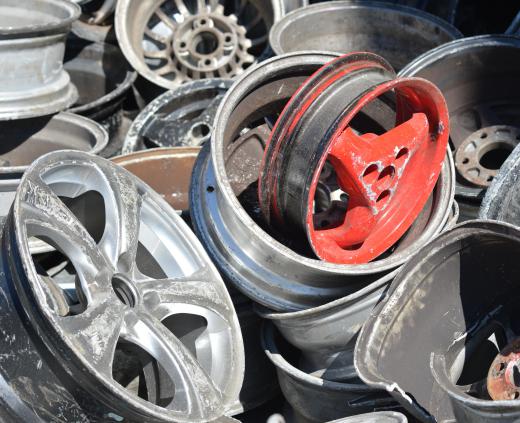A wrecking yard, more commonly known as a scrap yard or junkyard, is a business that specializes in storing and selling old vehicles and parts. A wrecking yard most commonly will hold cars, but some have motorcycles, boats and planes. The public normally is allowed to enter the junkyard to buy parts or whole cars from the owners. Vehicles that are too damaged to be sold normally are recycled, and the metal is sold to other industries. Vehicles brought to a wrecking yard usually are organized in a specific way to conserve space.
When a vehicle is too old to run, the parts are worn out or the owner just wants to sell it, he can sell it to a wrecking yard. The owner of a junkyard usually will take vehicles, regardless of condition, because he still can make a profit, even if vehicles are in their worst condition. This type of business most commonly has cars, but some have other types of vehicles. The junkyard owner will sometimes haul away the vehicle for the owner, but this may cost a fee.

One way a wrecking yard can be profitable is by allowing the public in to buy parts. The vehicles themselves normally are not in driving condition, but some of the parts may be in good or usable condition. For example, if someone needs a door or window for his car, then this person can find a similar car and buy the needed parts from the junkyard. Entire vehicles also can be purchased, but this is rare.

The vehicles the wrecking yard owner gets sometimes are too damaged and there are no salvageable parts. While he will not make as much on these vehicles, the owner still can profit by recycling the materials. The metal, glass and other materials can be sold to a recycling business, which will melt down the materials and sell them to other industries, or the junkyard may be able to perform such recycling itself.
A wrecking yard usually has a limited amount of space, and it has to find a way to conserve that space while still taking in new vehicles. To do this, most of the vehicles are placed in vertically ascending racks or stacked on top of one another. While stacking the vehicles may end up damaging them, most of them do not run anyway, so conserving space usually is the top priority.
